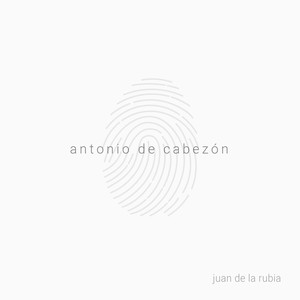
- 歌曲
- 时长
-
作曲家:Antonio de Cabezón
-
作品集:Diferencias sobre el Canto del Caballero
-
作曲家:Antonio de Cabezón
-
作品集:Diferencias sobre el Canto del Caballero
-
作曲家:Antonio de Cabezón
简介
It is surprising that in the 16th century a blind illiterate – a visually impaired person who could read and write was inconceivable – was capable of incorporating the heartbeat of European culture in his music. The printing press, treasures from the Americas, Copernicus, Servetus, Erasmus, Luther and Calvin among others were changing the world. As it happens, the royal entourage of Prince Philip passed through Trento during the Council meeting that would ratify the schism between Catholics and Protestants. All this, shortly before the publication of the first modern novel, Don Quixote of la Mancha, on the cusp of the 17th century and the appearance of a new form of entertainment, opera, that, with Monteverdi’s L’Orfeo, left a gap in the halls of the nobility. The essence of the 16th century lies within the music of Cabezón, possessed of “a wonderful view of human spirit” that opened “the eyes of understanding”, according to his son Hernando. The Flemish court chapel allowed him to become acquainted with central-European polyphony, while on his travels with the prince he absorbed the dances and popular melodies of the continent. Cabezón must have been familiar with more than one claviorgan. Today only about 20 originals remain in various museums, and the only one still in working order and the star of this recording is the Hauslaib in the Museum of Music in Barcelona. The blind composer, on the other hand, had several within his reach. There was one in Tordesillas, where the Infanta Catherine played it to ease the confinement of her mother, Queen Joanna the Mad (Juana la Loca). Another appears in the records of the Basilica of El Pilar in Zaragoza at the same time that Cabezón passed through on his way to Italy. Claviorgans are also mentioned in the inventories of household goods of Philip II and of Henry VIII, who died just before our musician visited London. The Hauslaib in the Museum of Music was built in 1590 in Nuremberg on the order of Duke Baltasar de Zúñiga, Prime Minister during the reign of Philip IV. Juan de la Rubia was only 11 years old when he heard Cabezón’s music for the first time. Listening to the Diferencias sobre el Canto del Caballero on the RNE program “El órgano” left him fascinated and, more than two decades later, led him to organize this personal selection, thinking specifically of the courtly instrument on which he would play. The Canto, specifically, is offered in two versions: one on the pipe organ, the other on the spinet harpsichord. The same work and the same player, but with different instruments produces very different results. We were incapable of setting either one aside.





